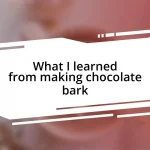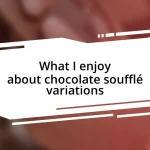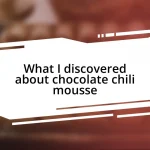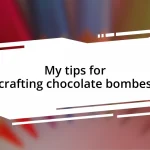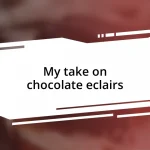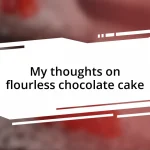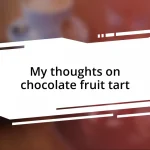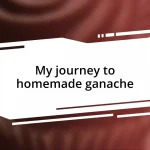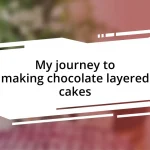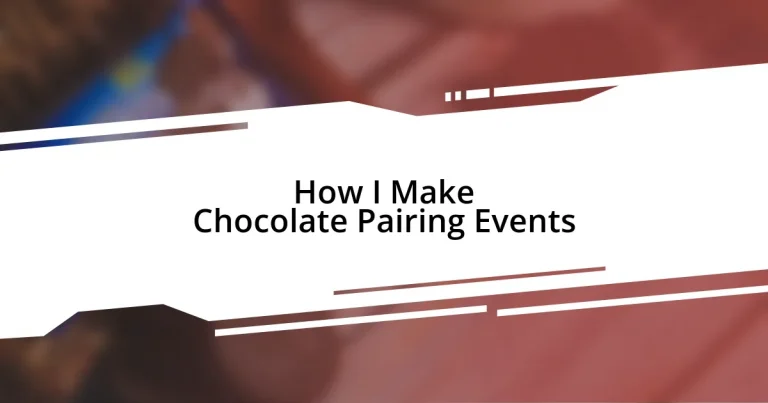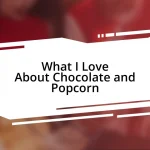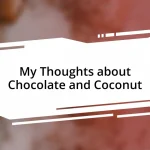Key takeaways:
- Choosing the right venue enhances the tasting experience; consider atmosphere and guest capacity.
- Diverse chocolate selections, including various textures and origins, foster engaging conversations.
- Pairing chocolates with complementary beverages can elevate flavors and create memorable experiences.
- Effective promotion through social media and collaborations can significantly increase event turnout and community engagement.
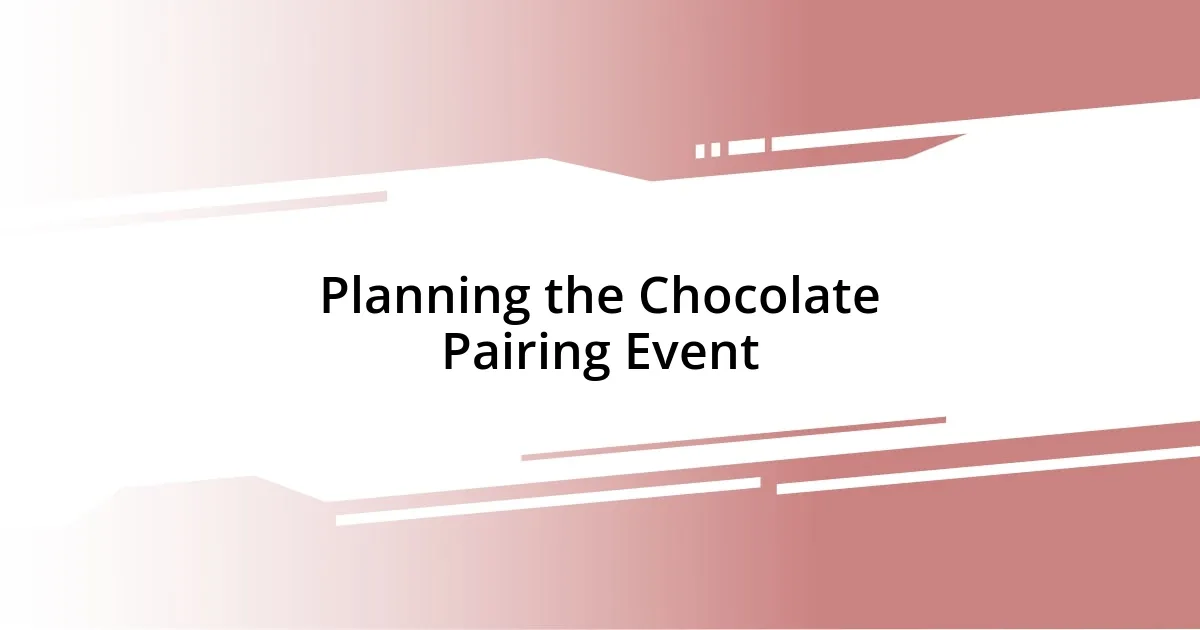
Planning the Chocolate Pairing Event
When I first started planning chocolate pairing events, I quickly realized that location played a critical role. I remember hosting my first event in my cozy living room, and while it felt intimate, the space limited my guest count. Have you considered how the atmosphere of your venue can enhance the tasting experience? It’s something worth pondering.
Choosing the right chocolates and pairings can feel overwhelming, but it’s also where the magic happens. I once spent an afternoon curating a selection of artisanal chocolates, only to realize that incorporating local wines created an unexpected harmony. Why not experiment with unexpected pairings? Your guests will appreciate the adventure, and you might discover some delightful combinations together.
As the event date approaches, I find that the little details matter just as much as the chocolate itself. I recall my friend’s wide-eyed excitement when she saw the thoughtfully crafted menus I designed to highlight each pairing. How do you want your guests to feel as they walk through the experience? Creating a narrative around each pairing can elevate the event, making it not just a tasting, but a memorable journey into the world of chocolate.
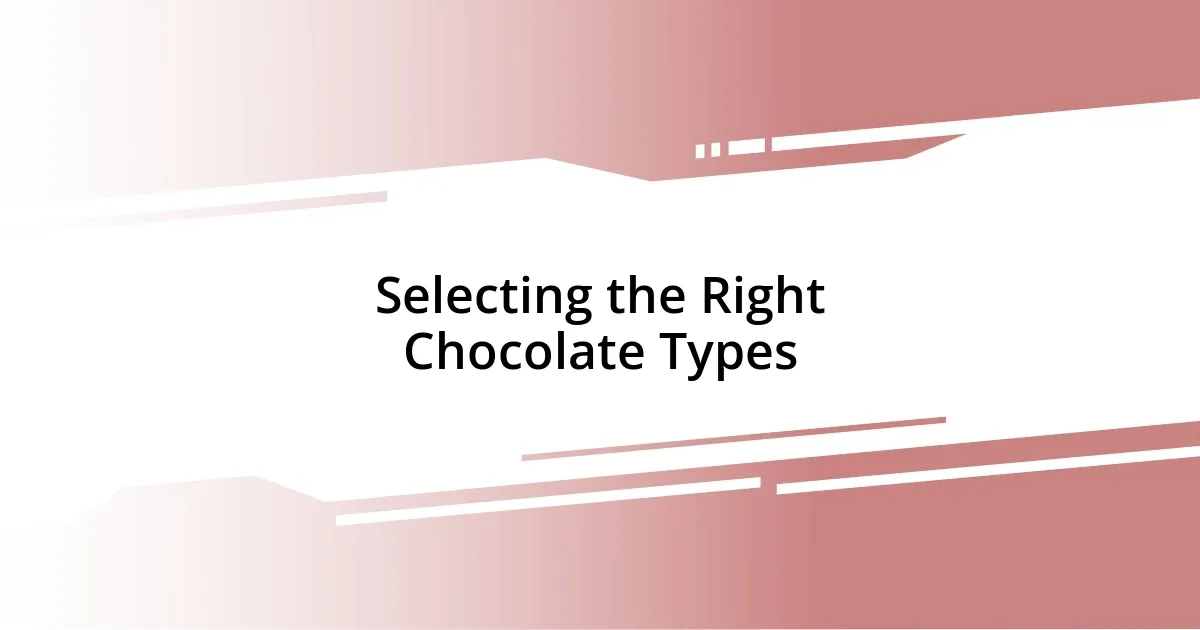
Selecting the Right Chocolate Types
Selecting the right types of chocolate is a crucial step in creating a memorable tasting experience. I recall a time when I focused solely on dark chocolates, only to discover later that a variety of textures and flavors could elevate the entire event. Embracing a range allows for more interesting pairings and surprises for your guests.
Here are some types of chocolate to consider:
- Dark Chocolate: Rich and complex, ideal for pairing with bold beverages like red wine.
- Milk Chocolate: Creamy and sweet, it’s great with fruits or light cocktails.
- White Chocolate: The versatile base offers unique pairings with spice or herbal infusions.
- Flavored Chocolates: Think of citrus or chili; they can add an exciting twist when combined with unexpected allies.
- Artisanal or Single-Origin Chocolates: These provide a storytelling element, bringing the origin and craftsmanship into your event.
Choosing a diverse selection not only creates an engaging experience but also sparks conversations among your guests, adding a delightful personal touch.
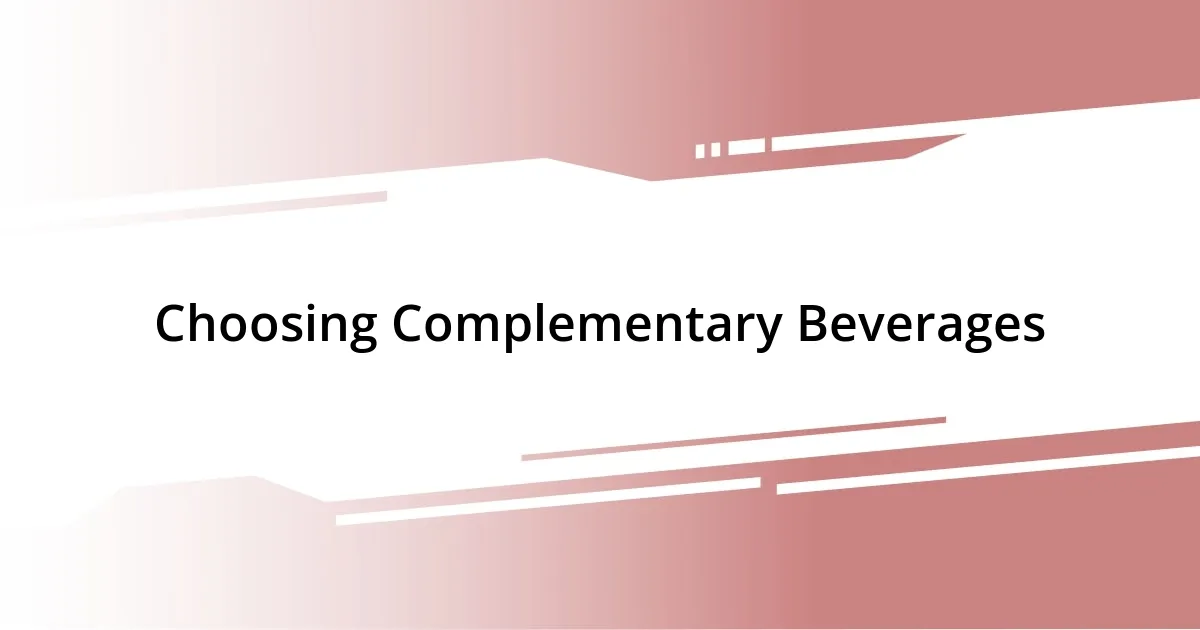
Choosing Complementary Beverages
When it comes to choosing complementary beverages, I find that it’s essential to balance flavors with the type of chocolate being served. I once hosted an event where I paired a hint of orange-infused dark chocolate with a rich, velvety Merlot. The simultaneous tasting created a wave of flavor that my guests cherished. Have you thought about how specific notes in a beverage can enhance or contrast the chocolate? It can be a revelation.
I’ve also experimented with lighter beverages, such as a refreshing mint cocktail paired with creamy milk chocolate. The cooling effect of the mint interacted beautifully with the chocolate’s sweetness, making it a delightful experience. A partner to your chocolate should ideally not overshadow it but instead create harmony. This not only entertains the palate but also encourages lively discussions among your guests about their experiences.
Here’s a simple breakdown of potential beverage pairings:
| Chocolate Type | Suggested Complementary Beverages |
|---|---|
| Dark Chocolate | Red Wine, Bourbon, Espresso |
| Milk Chocolate | Light Cocktails, Creamy Liqueurs, Fruit Juices |
| White Chocolate | Herbal Teas, Sparkling Wine, Sweet Cocktails |
| Flavored Chocolates | Craft Beers, Spicy Cocktails, Fruit Wines |
Exploring these pairings can truly elevate your event, offering a sensory adventure that delights both the chocolate and beverage enthusiast alike.
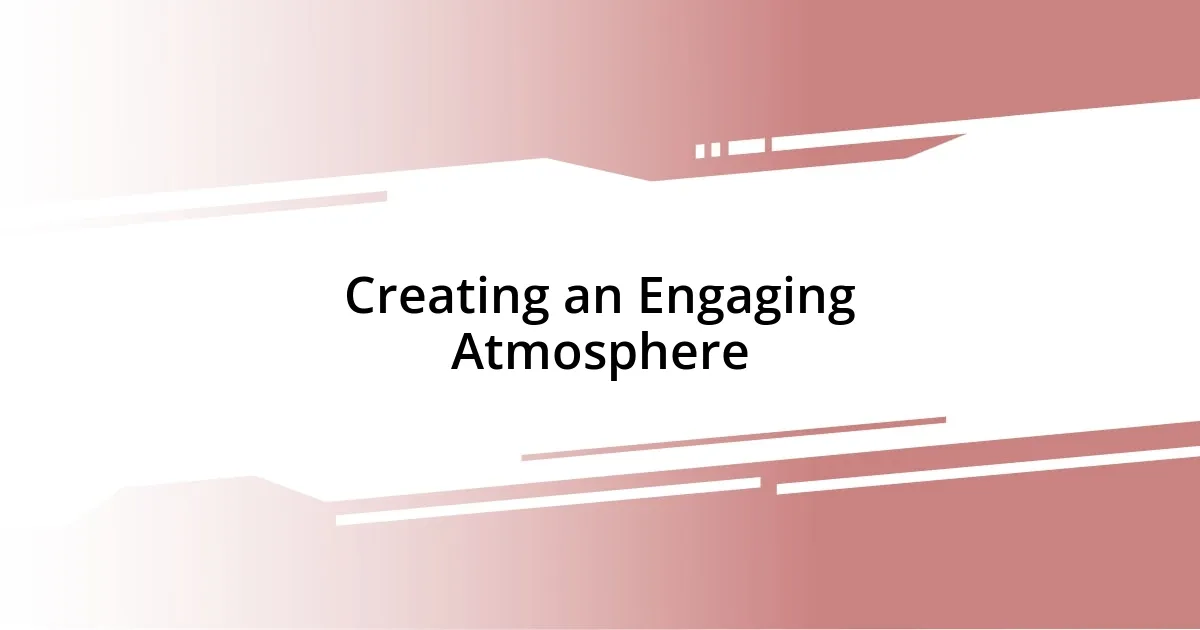
Creating an Engaging Atmosphere
Creating an engaging atmosphere can often make or break your chocolate pairing event. I remember hosting a gathering where I transformed my living room into a cozy, chocolate-scented oasis with soft lighting and soothing music. The ambiance invited conversation and curiosity, setting the perfect stage for my guests to explore the various flavors. Have you considered how little changes in the environment can significantly impact the experience?
To enhance the engagement factor, I like to incorporate interactive elements, such as a chocolate tasting chart for guests to take notes as they sample. I’ve seen participants bond over identifying similarities in flavors and discussing their preferences. This not only keeps the energy lively but also stretches the experience beyond mere tasting; it becomes a shared journey of discovery and pleasure.
Visual appeal is just as crucial. At one event, I laid out the chocolates in colorful arrangements, resembling a delectable art piece. The vibrant display ignited excitement and curiosity in my guests. It’s fascinating to observe how the aesthetics invite people to dive deeper, prompting questions about each chocolate. How can you make your presentation just as captivating?
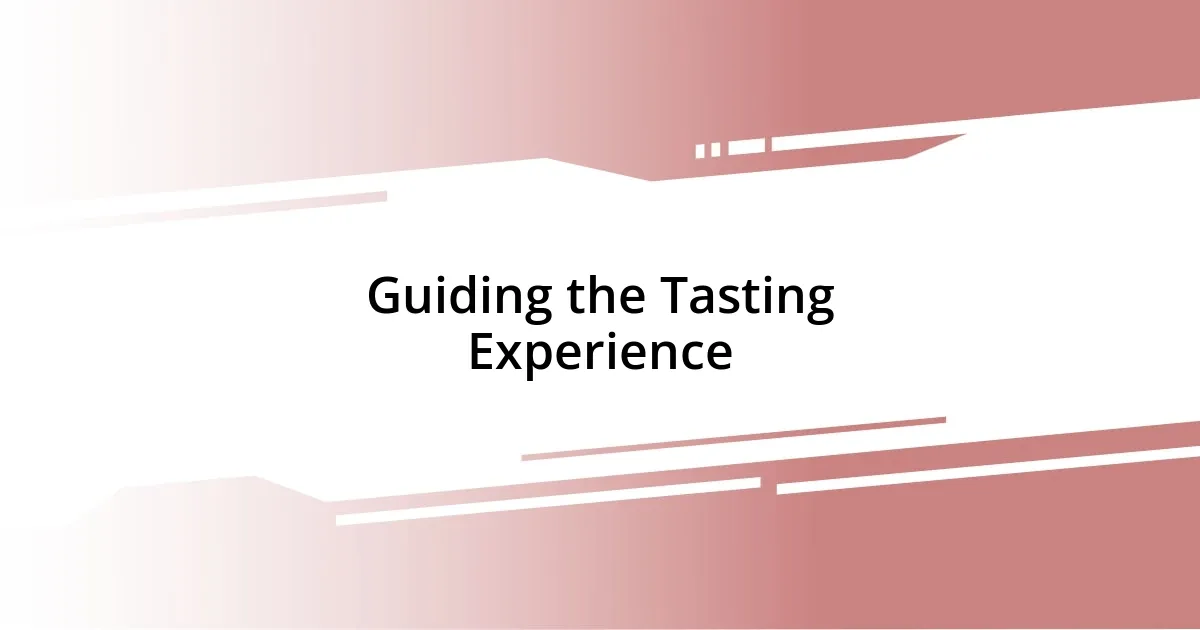
Guiding the Tasting Experience
Guiding the tasting experience is all about leading your guests through the flavors. I find that starting with a simple introduction about each chocolate helps set the tone. For instance, when I described the single-origin dark chocolate’s earthy notes, I noticed guests were already curious, eager to anticipate its taste. Isn’t it wonderful how just a few words can spark interest and enhance the experience?
As we progressed to the actual tasting, I suggested my guests take their time, allowing the chocolate to melt and reveal its complexity. During one event, a guest remarked on how she had never thought of savoring chocolate this way. It reminded me that guiding isn’t just about information; it’s about fostering an appreciation for the moment. Have you ever paused to truly experience a flavor? It can transform the ordinary into something extraordinary.
Finally, I love incorporating personal stories about each chocolate’s origin. When I shared an anecdote about the chocolate maker’s dedication to sustainable farming, the guests connected with the product on a deeper level. This storytelling element creates a rich tapestry of knowledge and emotion, ensuring the pairings aren’t just tasted—they’re truly experienced. What memories do you think your chocolates could evoke?
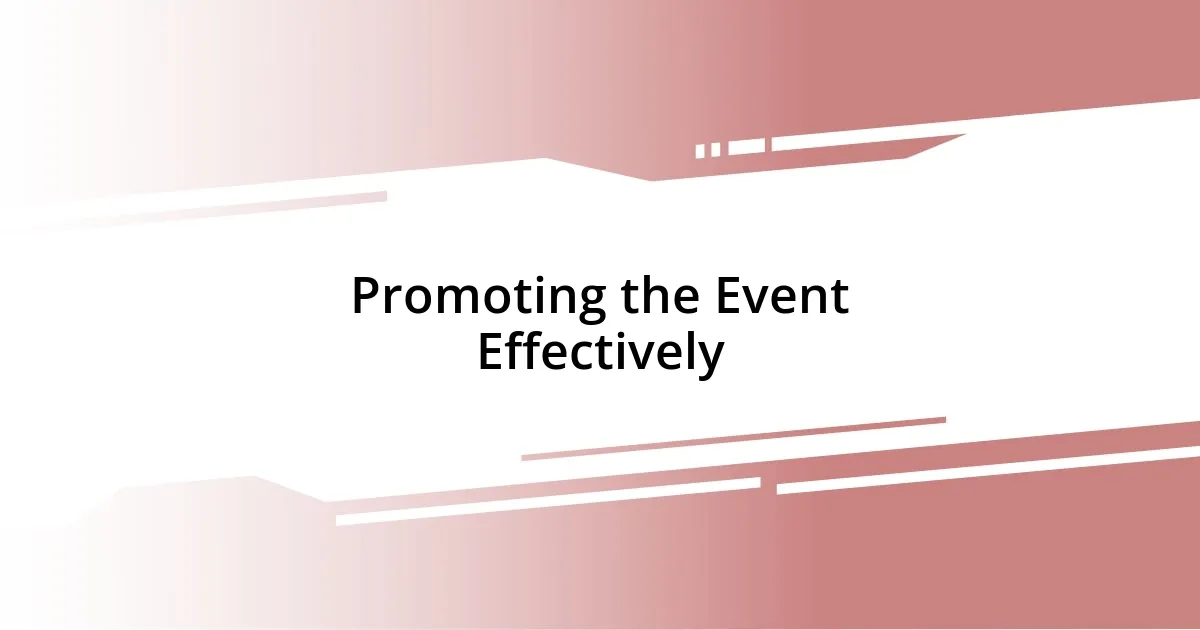
Promoting the Event Effectively
Promoting your chocolate pairing event effectively can pave the way for a successful turnout. I’ve always found that utilizing social media plays a huge role in spreading the word. A few eye-catching posts featuring tantalizing photos of your chocolates and creative pairings can generate buzz. Just recently, I created a short video showcasing the preparation, and the response was incredible—people love to see the process behind the deliciousness!
Email marketing is another tool in my arsenal. When I send out a personalized invitation with enticing details about the tasting experience, I notice a much higher engagement rate. Last time, I included a fun teaser about a surprise chocolate flavor, which hooked my audience immediately. By adding that element of excitement, you encourage potential guests to commit early. Have you thought about the different ways you can draw your audience in before the event even starts?
Don’t underestimate the power of collaborations. Partnering with local chocolatiers or wine makers can amplify your event’s visibility in the community. For instance, I teamed up with a local dessert café, and they marketed our event through their channels as well. It was such a win-win, and guests loved the added connection to their favorite local spots. How could collaborating with others broaden your reach?
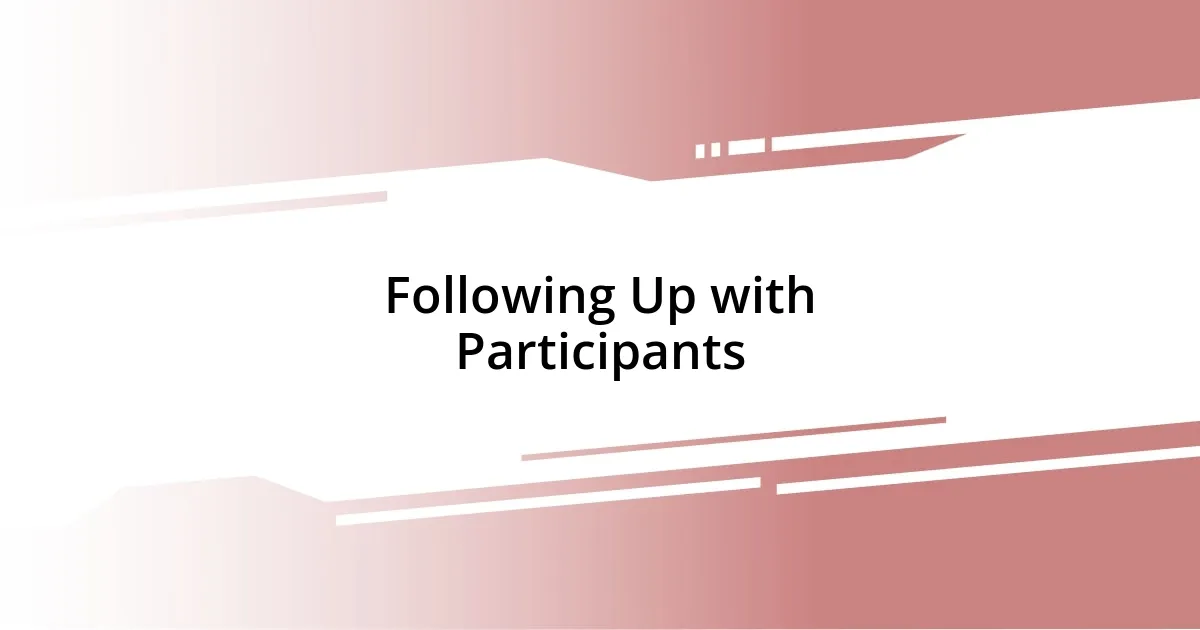
Following Up with Participants
Following up with participants after the event is where the real connection happens. I usually send a thank-you email within a couple of days, expressing my gratitude for their attendance. One time, a participant replied sharing how the event inspired her to explore chocolate tasting as a hobby, which truly warmed my heart. Have you considered how your follow-up could nourish a budding passion in someone?
In addition to expressing gratitude, I love to gather feedback on the experience. Keeping it short and sweet, I ask participants a few questions about their favorite pairings or what they’d like to see in future events. One memorable follow-up survey revealed that guests wanted more interactive tasting elements, which I eagerly incorporated into the next event. Have you ever seen how feedback can shape your future endeavors? It’s a powerful tool for growth.
Lastly, I often include a special offer or sneak peek of upcoming events in my follow-up communications. Recently, I shared an exclusive discount for attendees who book their spots for the next chocolate pairing night, and the response was fantastic. This not only encourages repeat attendance but shows participants they are valued. How might such incentives enhance your relationships with attendees?


